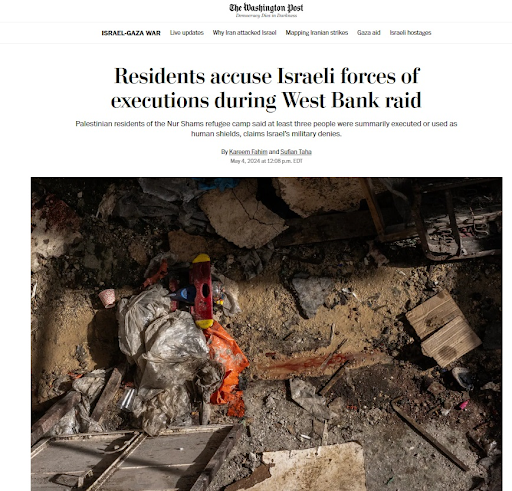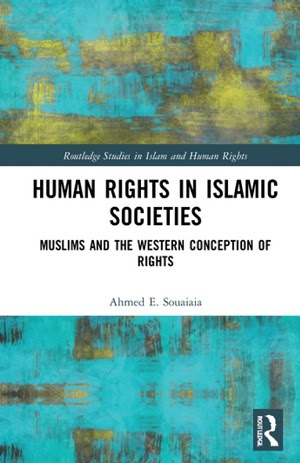Washington Post: Testimonies about executions and occupation practices in Nour Shams, West Bank, Palestine
The Washington Post quoted Palestinian testimonies about what they said were field executions carried out by the Israeli occupation forces during their attack on the Nour Shams camp in the West Bank last month, as well as about the use of civilians as human shields.
When the soldiers arrived at the home of the Palestinian Muhammad Abu Sweilem - in the camp located east of the city of Tulkarm - they ordered him to bring his son, and he begged them to take him in his place.
Abu Sweilem wondered why the soldiers wanted his son, Rajai (39 years old), who is a father of four children and works in the family store and is not involved in the ranks of the resistance.
The soldiers did not know who Rajai was and did not seem to care. They did not even ask for his identity card - as the family says - and yet they took him with them.
Less than a minute later, Muhammad heard gunshots and his son's voice screaming in pain. Hours later, the family found Rajai's body after the soldiers withdrew.
The family says that the occupation soldiers used Rajai as a human shield during their clash with resistance fighters in a basement apartment and then killed him, which the occupation army denied.
The Washington Post shed light on several aspects of the storming and siege operation carried out by the occupation army in Nour Shams camp on April 18, which lasted more than 50 hours.
The newspaper said that, over two days, it conducted more than 12 interviews inside the camp and over the phone, and also reviewed photos and video recordings taken by eyewitnesses.
Camp residents said that the Israeli army used brutal tactics - during this attack - which some described as the most violent and longest since last October, when the occupation began escalating its military operations in the West Bank coinciding with its war on Gaza.
During this attack, 14 Palestinians, including two children, were martyred, and the occupation forces left widespread destruction in the camp’s buildings and streets.
The families say that at least 3 of the martyrs were field-executed or used as human shields by the occupation soldiers: Rajai Abu Sweilem, Jihad Zendiq, and Ahmed Arif.
The family of Jihad Zendiq (14 years old), who lives in the city of Taybeh inside the Green Line, located south of Tulkarm, says that they arrived at Nour Shams camp to visit their relatives, and this coincided with the occupation army’s storming of the camp.
The family says that Jihad left his grandfather's house in the camp on April 19 and went to his great uncle's house, where he apparently joined a group of resistance fighters.
The occupation soldiers raided the area and ordered the resistance fighters to leave and surrender.
Jihad's aunt Haneen says she heard him tell the soldiers that he wanted to surrender, but they shot him in the head.
She took a picture of her nephew's body - which had been lying in the street for 16 hours - with a large-caliber bullet hitting his right eye.
A spokeswoman for the Office of the United Nations High Commissioner said - during a press conference on April 23 - that they had received reports that a number of Palestinians were unlawfully killed and that soldiers used unarmed Palestinians as shields to protect their forces and killed others in extrajudicial executions.
The office also stated - in a preliminary assessment - that the Israeli military operation included "a massive bulldozing of several vital roads inside the camp and others leading to the city of Tulkarm, which caused severe damage to the water, sewage, electricity and communications networks."






















